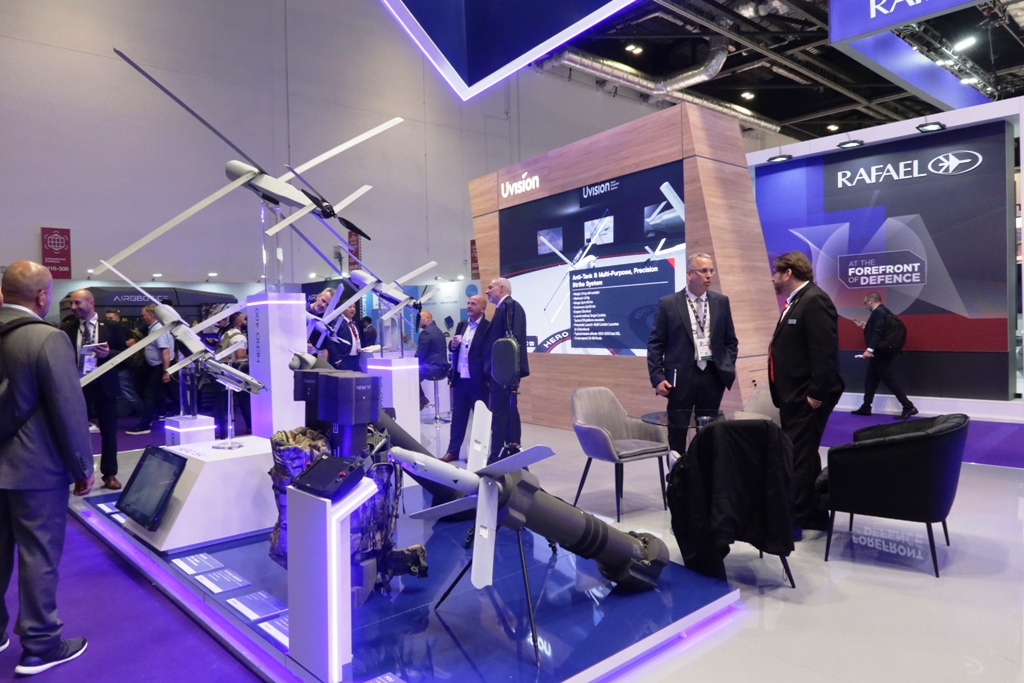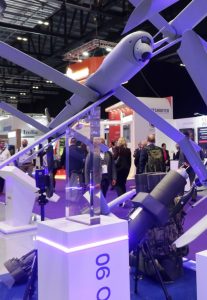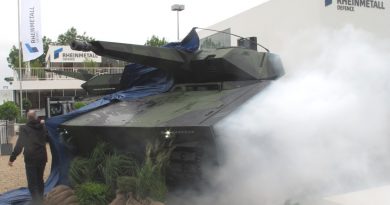
DSEI 2025 – Uvision CEO depicts the company way ahead, new customers, new products, and new technologies
Uvision, one of the key companies in the loitering munitions field, is expanding its footprint adding new customers, widening its portfolio with new products, and improving existing products performances through new technology insertions
At DSEI 2025 EDR On-Line met Dr. Ran Gozali, Uvision CEO, to discuss the evolution of loitering munitions and that of the company, one of the major players in that field. “These are exciting times in terms of the loitering ammunition segment. We were pioneer in this area, and now the market is expanding quite rapidly. As we speak, we are selling our equipment in 21 countries, with 29 customers, ranging from the US, to many countries in Europe, to India, and in the rest of the world, including, as you know, from Azerbaijan, and more,” he told us as a starter.
When the company started its activities, several models of its Hero munitions were announced; Uvision concentrated its efforts on those which better answered the requirements of the moment, and currently some of them are produced full steam. “We have three munitions that are at TRL 9, in full production and combat proven, the Hero 30, the smaller one for anti-personnel missions, the Hero 120 that is fitted with a multi-purpose, antitank and antipersonnel, warhead, and the bigger one, the Hero 400. To those we recently added the small brother of the Hero 120, the Hero 90,” Dr. Gozali points out.

Lighter, 18 kg versus 24 kg, and shorter compared to the Hero 120, “the Hero 90 maintains a multi-purpose warhead,” Uvision CEO underlines. Although lighter, 3.3 kg versus 4.5 kg (the latter mass including the warhead itself, the electronic safe and arm, and the front electro optic payload), it is still considerably effective against soft and armoured targets, which it can reach at up to 45 km range, with an endurance of 40 minutes, compared to the 60 km and 60 minutes of the bigger brother.
“The Hero 90 is first aimed at the US Army,” Ran Gozali underlines, the market expanding from specialized units to the Big Army. “The US Army issued a Request for Proposal for a programme known as LASSO, for Low Altitude, Stop and Strike Ordnance, and we are there, we are very well positioned in terms of the cost-performance ratio, while operating points meet all the Army requirements,” he adds.
Recent events in Europe highlighted the importance of mass production and timely deliveries. “The loitering munition market is different from that of UAS and other categories. If you are not ready to deliver and support the customer with his need right now, the customers will go to another provider. This is why important for us to have good factories all over the world,” Dr. Gozali says before listing Uvision production facilities.
“We currently have five production lines around the globe. Two of these are in the US, one in Stafford, Virginia, at Uvision Inc, our 100% owned total company USA subsidiary, and the second in Charleston, South Carolina, with our industrial partner, SAIC. So we have ramped up production to be ready to scale for the US Army. And this is not only a production line, as we have also embedded into our solutions US technologies,” he explains. An example is the integration on the HERO 120 of the Javelin warhead, developed for the RTX/Lockheed Martin antitank missile. Other US technologies added to the Hero 120 are the Silvus Technologies’ MANET radio system and BAE Systems SAASM-based GPS technology for navigation in EW contested scenarios. “All this makes it a US product, and we have a National Stock Number which proves it, this opening up the potential for also So Foreign Military Sales deals,” Ran Gozali adds.
“We have one production line in Europe, together with RWM Italia, a Rheinmetall company, based in Sardinia, and we are in the process of opening a second line in Germany,” the CEO states, a first Europeisation of Uvision products being the adoption of Rheinmetall’s warhead for the Hero 120. A further production line is available in Hyderabad, India, where in 2020 Uvision established Avision Systems, a joint venture with Aditya Precitech Pvt. Ltd. (APPL), here too the Hero 120 being fitted with a locally developed and produced warhead; Hero munitions are known in India as PALM, for Precision Attack Loitering Munitions. Finally we have the Israeli production line, the brand new facility with large manufacturing capacity, where Uvision loitering munitions are fitted with the original warheads developed in-house.
To maintain its positioning in the loitering ammunition market Uvision is improving their performances. “We are bringing third generation capabilities across our ammunitions. We have embedded into our Hero ammunitions more advanced hardware and software pieces, to accommodate advanced computer vision and AI algorithms. To improve accuracy in the homing phase, we have added automatic target recognition capabilities, visual motion detection, as well as navigation capabilities to operate in GPS denied environment,” Dr. Gozali announces. EDR On-Line understood that the research and development phase has been completed, testing and qualification was overcome, and the next production batch, in early 2026, will come with those improvements.

Allowing a single operator to handle more than one munition at a time, this in an emerging requirement to which Uvision is ready to answer. Another major improvement is to step up from munition management to mission management, the latter meaning that a single fire control unit (FCU) will be capable to fly multiple munitions. “It is a gradual development which is emerging in real contracts. We call it one to many, and to do that we are developing the software piece to have common operating system so that we can deploy multiple birds simultaneously, reducing the operator’s burden,” Uvision CEO explains.
The number of Heros that the FCU can handle depends on various factors. “It is usually a matter of software configuration, but in terms of operational needs an operator should handle up to four munitions, no need to have more. This demand coming from the market is for two to four birds. We are developing gradually the add-on layers to insert in our operating system,” Ran Gozali says. EDR On-Line understands that the upgraded software will be able to handle Heros of different sizes, adding flexibility to the mission. According to the press release issued by the company the Common Operating System, COS in short, as the AI-powered system is known, allows operating loitering munitions of different classes, ranging from the Viper 300 2 kg munition, developed by SpearUAV partly owned by Uvision, to the mighty Hero-400 110 kg munition.

The Uvision CEO clearly states that his company does not intend to develop any type of C4I system. “We are embedding our solutions into any host C4I system, and it is what we have done it actually with Rheinmetall’s Electronic C4I solution. We can also integrate our solution in any ISR system that can collect targets, and we currently have a project in India; here the ISR platform collects static and moving targets, hands them over to the loitering munitions, which neutralize them, while the ISR platform will do battle damage assessment,” target assignment being carried out either by the ISR platform itself or by an overarching battle management system. EDR On-Line understands this will not happen in one stage; it is under development, and will evolve throughout the years, with successive releases of the software.
Concluding the interview, Dr. Ran Gozali summarizes the way ahead for Uvision: “So to summarize, in short, we are expanding adding new countries and customers, we are expanding our portfolio with the Hero 90, we are expanding third generation capabilities, and finally we are expanding towards network centric solutions. So these are the four pillars that are marking our vision for the future,” he concludes.
Photos by P. Valpolini

